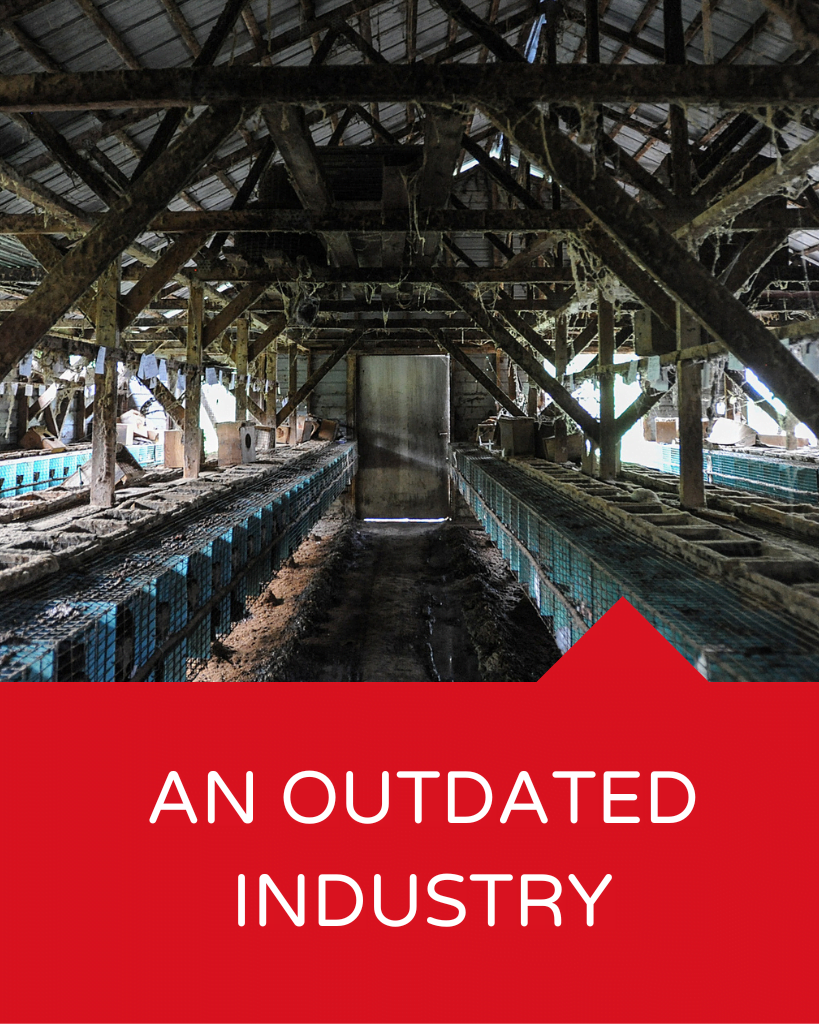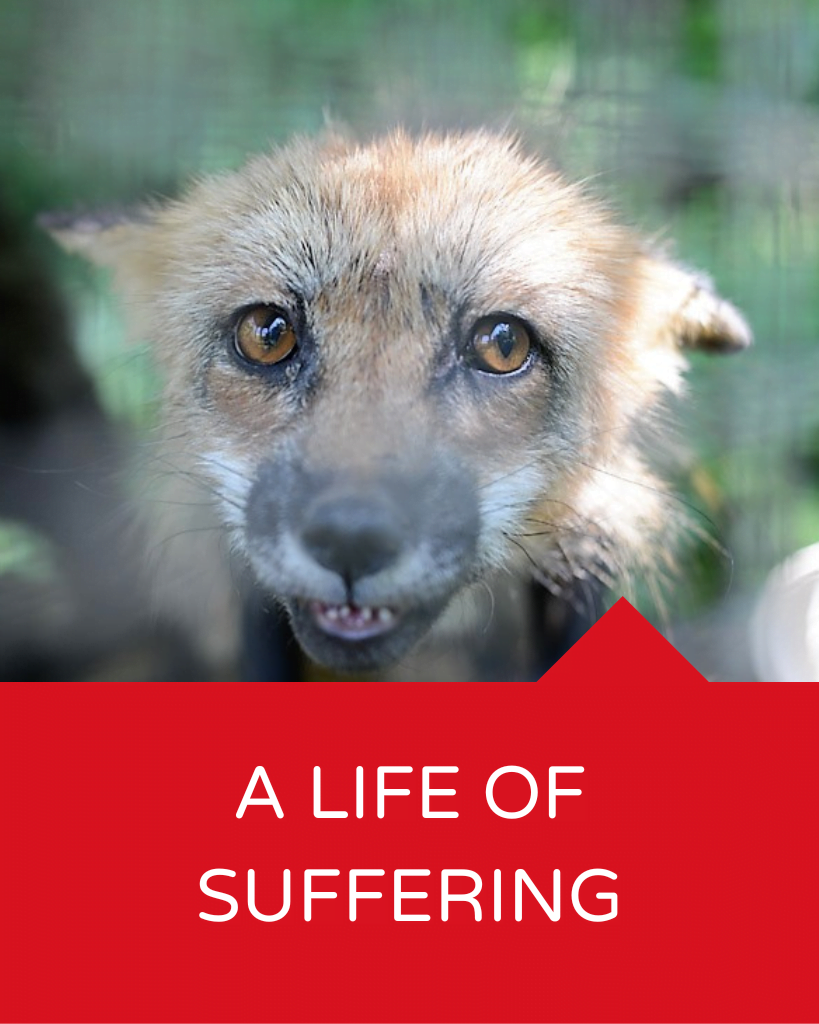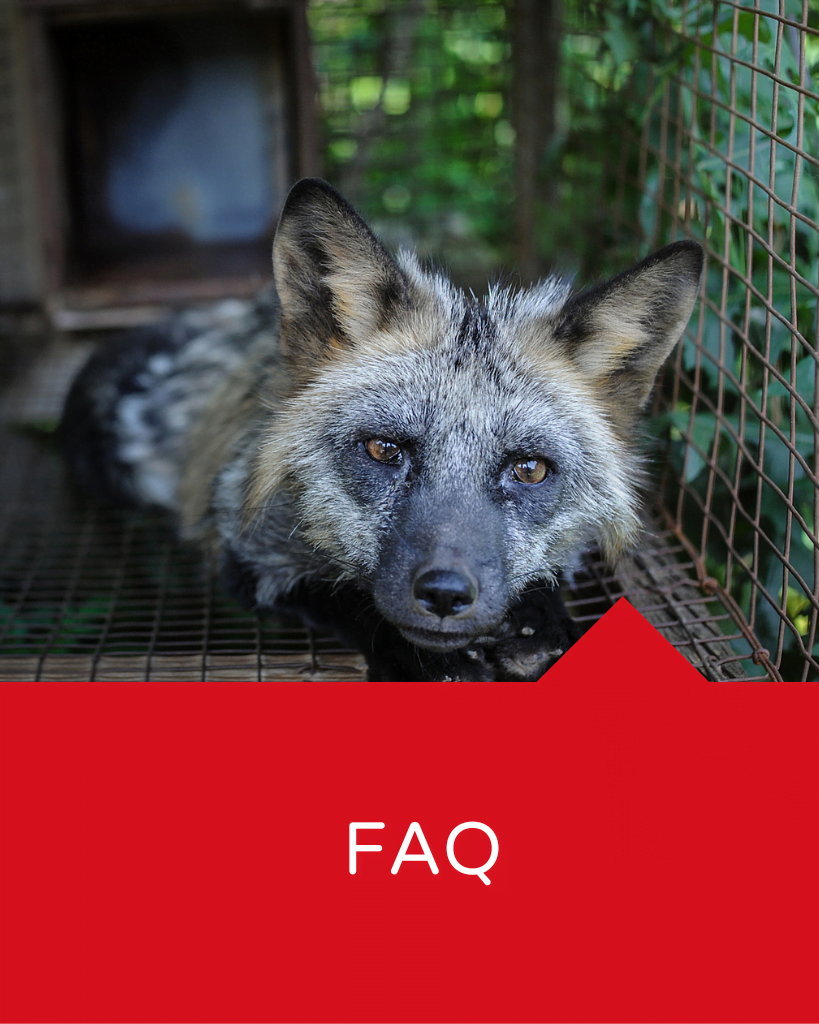Fur farms: major impacts on public health and the environment
According to scientists, in June 2021, up to seven million minks in over four hundred farms across Europe and North America,1 including Canada, were infected with COVID-19 (caused by the SARS-CoV-2 coronavirus). Raising animals for their fur can also have negative impacts on our aquatic ecosystems, contribute to climate change and transmit diseases to neighbouring wildlife.
A public health threat
Intensive mink farming facilitates the spread of coronavirus. Minks can contract the coronavirus responsible for COVID-19 from humans2 and transmit it to other minks.3 The conditions in which farmed minks are kept, with large numbers of animals crowded together in a very small space, encourage this transmission. Solitary by nature, minks also suffer stress caused by forced cohabitation with others of their kind, which could weaken their immune system and make them even more vulnerable to the virus.4
In addition to contaminating each other, minks can also become intermediary hosts and transmit a mutated form of the virus to the humans working with them.5 The American mink is, moreover, one of the only non-human species known to have transmitted the coronavirus to humans.6 Several cases of human infection among mink farm workers were reported throughout the world, including in Canada.7
New coronavirus variants were also detected in these farms, posing a threat to public health and vaccine efficiency.8
In another potentially harmful practice, chemicals such as formaldehyde are used in the preparation and dyeing of furs to prevent them from biodegrading. This known carcinogen9 can have negative effects on the health of workers handling the furs, as well as of the wearer.
An ecological disaster
Phosphorus present in mink manure can contaminate bodies of water near farms. A high concentration of phosphorus in these waters has a negative impact on aquatic ecosystems, notably through the proliferation of cyanobacteria (blue algae). These algae blooms can kill fish, contaminate drinking water and release toxins that are dangerous for humans and animals.10
Neither mink farming nor fur processing are energy efficient, as they require a large amount of resources such as water, land, food and energy. They contribute to climate change, ozone layer depletion and acidification of terrestrial ecosystems.11
In fact, according to a European study12, the environmental impact of a natural mink coat is 3 to 10 times higher than that of a fake fur coat. A similar study13 compared the environmental impact of farmed mink fur to that of other textiles, such as cotton and polyester. Compared to the textiles, fur had a greater impact for 17 out of 18 of the mentioned environmental aspects, including climate change, eutrophication and toxic emissions.
Finally, disease and virus transmission from farms to surrounding wildlife represents a major threat. This can occur when wildlife from surrounding areas comes into contact with an infected mink or fox in captivity or who escaped, or with their excrement or carcass. For instance, the Aleutian mink disease virus (AMDV) is highly contagious and causes minks to suffer blood imbalances, kidney problems, decreased fertility and chronic immune dysfunction.14







